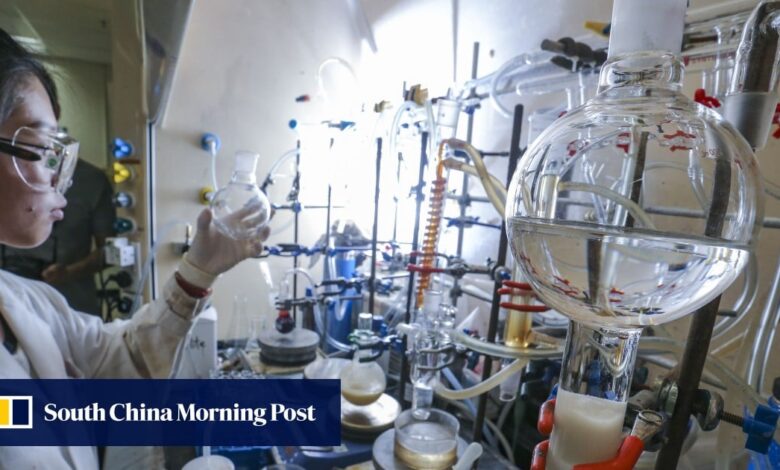China-US tech rivalry: Beijing plans to restructure national labs, boost investment in scientific research

China is planning to realign hundreds of “state key laboratories” with the country’s technology priorities and articulate a 10-year programme to boost spending on fundamental science research, as Beijing rolls up its sleeves in competing for tech dominance against the United States.
At the national technology working conference on Tuesday, the Ministry of Science and Technology said China will carry out a systemic restructuring of the country’s national key labs and release a 10-year plan to boost the country’s basic scientific research.
Priorities for 2021 also include mobilising a nationwide system to seek breakthroughs in key research areas, and encouraging enterprises to take on a more dominant role in science and technology research, the ministry said at the conference chaired by Minister of Science and Technology Wang Zhigang.
“[Catching up in technology] has long been a quiet policy goal in China, but the fact that we’re seeing this explicitly come out into the open now is notable,” said Nick Marro, a global trade lead at The Economist Intelligence Unit. “China is adopting a more hardline, sober assessment of current geopolitical risks, which will inevitably drive much of its future digital policymaking.”
One hurdle has been a lack of enthusiasm by Chinese enterprises, especially private businesses. The majority of Chinese state key labs are at universities, the state-run Chinese Academy of Sciences and state-owned enterprises.
But Marro said US restrictions to prevent China’s development “can only go so far”, as Chinese policymakers and US firms will just try to find loopholes. “A more sustainable strategy would be to try to out-innovate China, whereby US investment is directed into supporting domestic science and technology activities, including R&D. The Biden administration has hinted that it resonates more with this stance.”
Naubahar Sharif, associate professor of public policy at the Hong Kong University of Science and Technology, said state key labs are the “main vehicles that the Chinese authorities are employing to direct resources towards advancing basic research capacity and capabilities”.
Aside from the labs on the mainland, there are over a dozen housed in Hong Kong schools such as the University of Hong Kong, the Chinese University of Hong Kong, the Hong Kong University of Science and Technology and the Hong Kong Polytechnic University.

01:10
China launches more Gaofen satellites to boost national security and technological development
China launches more Gaofen satellites to boost national security and technological development
China’s booming economy has made it possible for the country to steadily increase spending on research and development, but its R&D expenditure as a percentage of GDP still lags behind advanced economies like the US and Japan.
“Scientific knowledge often takes a long time to become useful,” Sharif said. “With that in mind, the Chinese authorities have taken concrete and extensive steps to invest heavily in basic research, fully realising that the fruits of that focus and investment may take a very long time to appear.”
Marro said that in many areas such as integrated circuit manufacturing, the country’s investment “hasn’t really yielded a lot of results, other than some noteworthy cases of wastage and fraud”. However, he said, “we shouldn’t fully rule out China, which will likely pivot towards expanding its existing comparative advantages, including in areas like mobile finance and Big Data”.
This article appeared in the South China Morning Post print edition as: State labs key part of Beijing’s new tech drive
Source link


